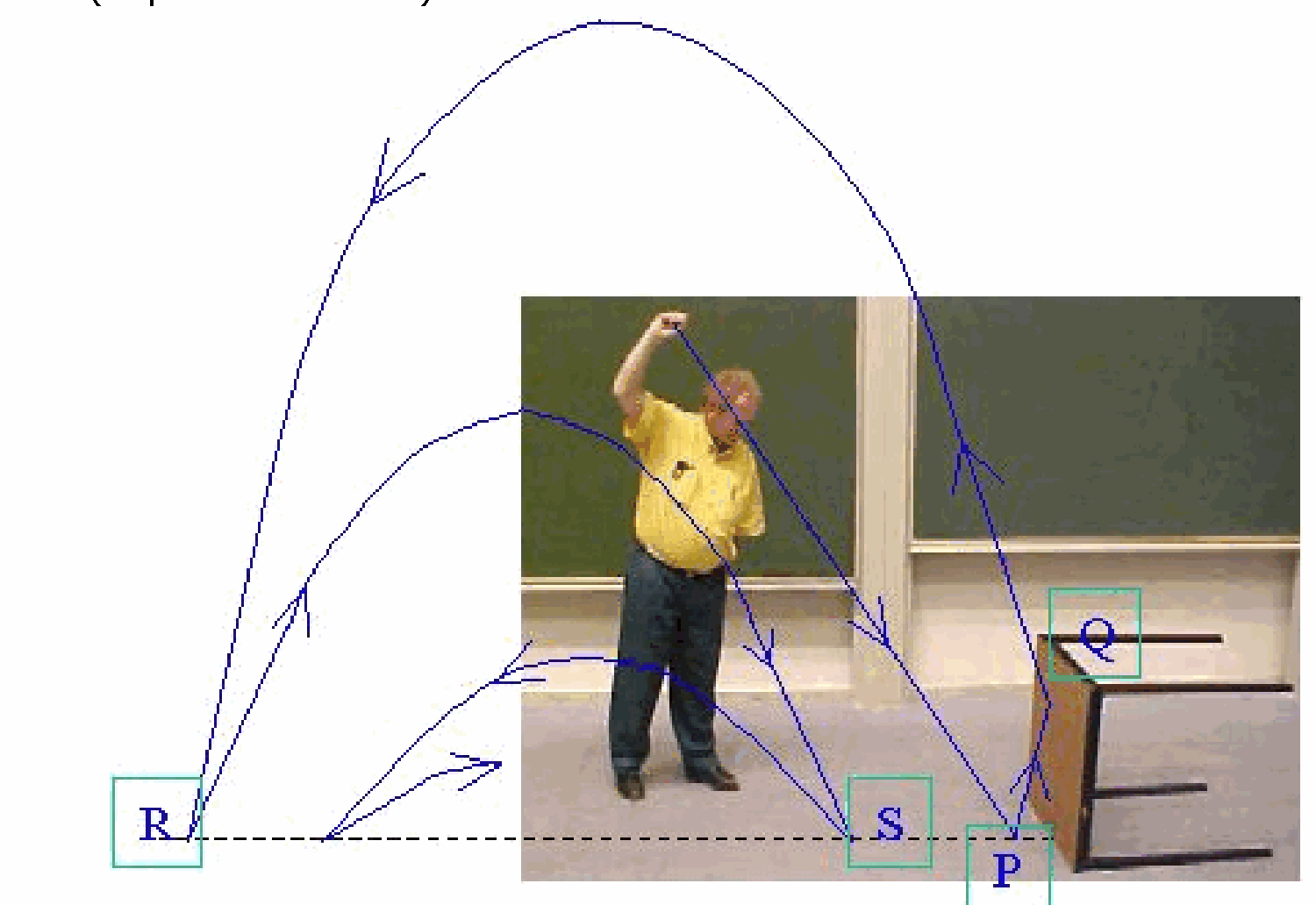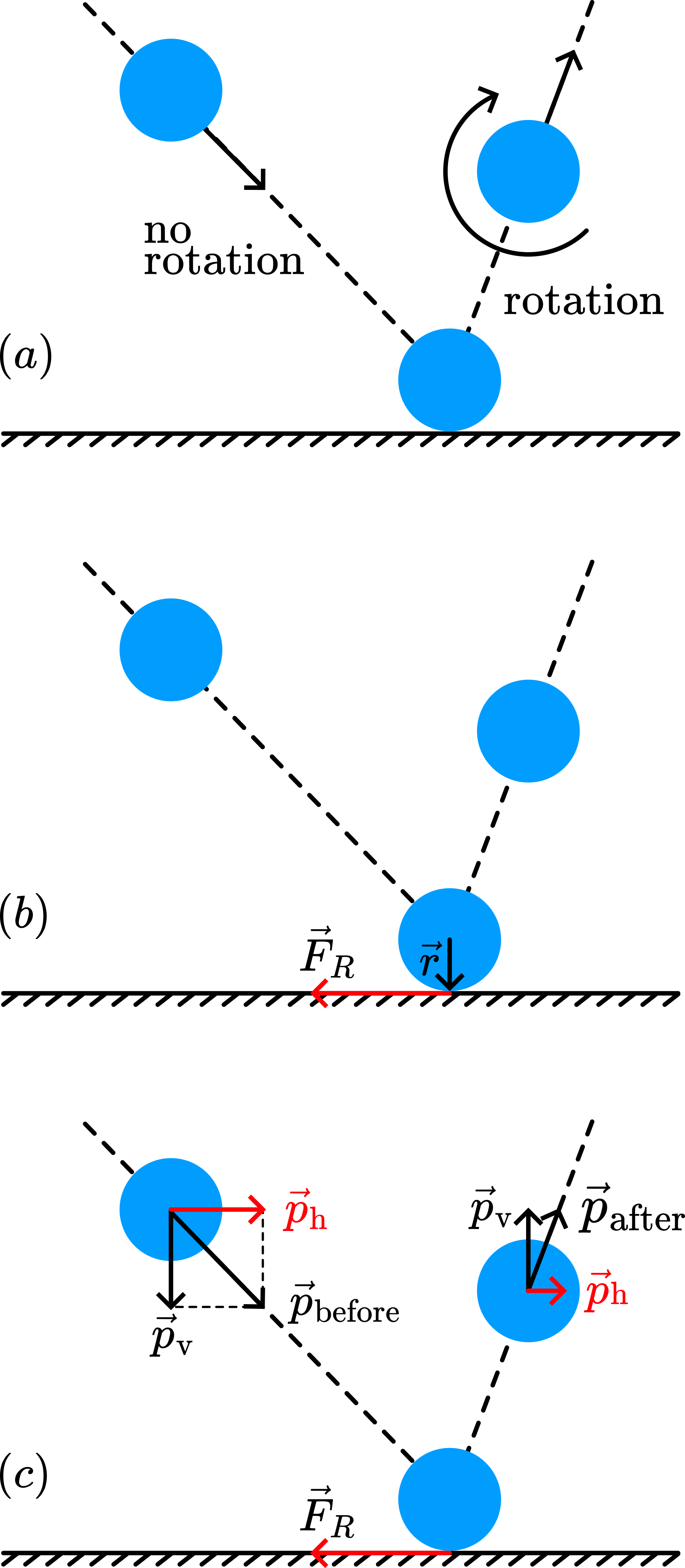05 Throwing a Basketball#
Aim#
To show how impulse changes the movement of a thrown basketball.
Subjects#
1K10 (Dynamic Torque)
1K20 (Friction)
1N10 (Impulse and Thrust)
Diagram#

Fig. 108 .#
Equipment#
Basketball.
Presentation#
The lines on the basketball make it easy to see if the ball rotates yes or no.
Throw the basketball and observe that before hitting the ground it does not rotate, but that after rebound it rotates (see Figure 117A).
Also can be observed that after rebound the ball moves steeper than when it was in the throw (again: see Figure 117A).

Fig. 109 .#
Explanation#
The ball has an impulse \(p\), which can be looked at as consisting of a vertical component \(p_{\nu}\) and a horizontal component \(p_{h}\). When the ball hits the ground, \(p_{\nu}\) is reversed (supposing complete elasticity). But \(p_{h}\) changes because the friction force \(F_{R}\), that acts during a short time ( \(\Delta t\) ), reduces the horizontal impulse by an amount of \(\Delta \vec{p}_{h}=\int_{0}^{\Delta t} \vec{F}_{R} d t\). The combination of unchanged \(p_{v}\) and changed \(p_{h}\) makes that the ball mounts steeper (Figure Figure 117C).
That it rotates as well is due to the torque during contact with the ground, changing its angular momentum by an amount of: \(\Delta \vec{L}=\int_{0}^{\Delta t} \vec{r} \times \vec{F} d t\).
Sources#
American Journal of Physics, 72-7(2004), pag. 875-883
Nederlands Tijdschrift voor Natuurkunde, 70-10(2004), pag. 347
Walker, J., Roundabout, the Physics of Rotation in the Everyday World, pag. 8-12
